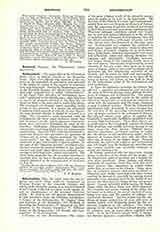

Referendarii. —The papal office of the referendarii (from refero, to inform) existed at the Byzantine Court. They were officials who reported to the emperor on the memorials of petitioners, and conveyed to the judges the orders of the emperor in connection with such memorials. During the Merovingian period of the Frankish Empire, the official later known as chancellor (cancellarius) is called “referendarius”. In the Papal Curia the office of “referendarii Apostolici” originated in the Middle Ages; their duty was to receive all petitions directed to the Holy See, to report on them to the pope, and to tender him advice.
The treatment and decision varied according to the nature of the question. If a favor was concerned, it might be either granted or refused; if some dispute, The pope decided whether it should be referred to a judge. The referendarii were entrusted with all arrangements for these papal decisions, which they had to prepare for the pope’s signature (signatura). From these referendarii developed the court of the Signatura (Collegium referendariorum Signaturm votantium), concerning which there are various papal constitutions. Innocent VIII (1484-92) introduced a distinction between the referendarii on questions of favors and of justice, whence developed the “Signatura gratiae” and the “Signatura justiti”, each competent to give final decision within its sphere. In the court of the “Signatura justitiae” developed a distinction between the prelates entitled to vote (praelati votantes) and those whose duties were confined to reporting on individual cases (praelati referendarii). The whole body gradually lost all practical importance, especially after the loss of the papal States, and was entirely abolished at the reorganization of the Curia by Pius X.
J. P. KIRSCH

